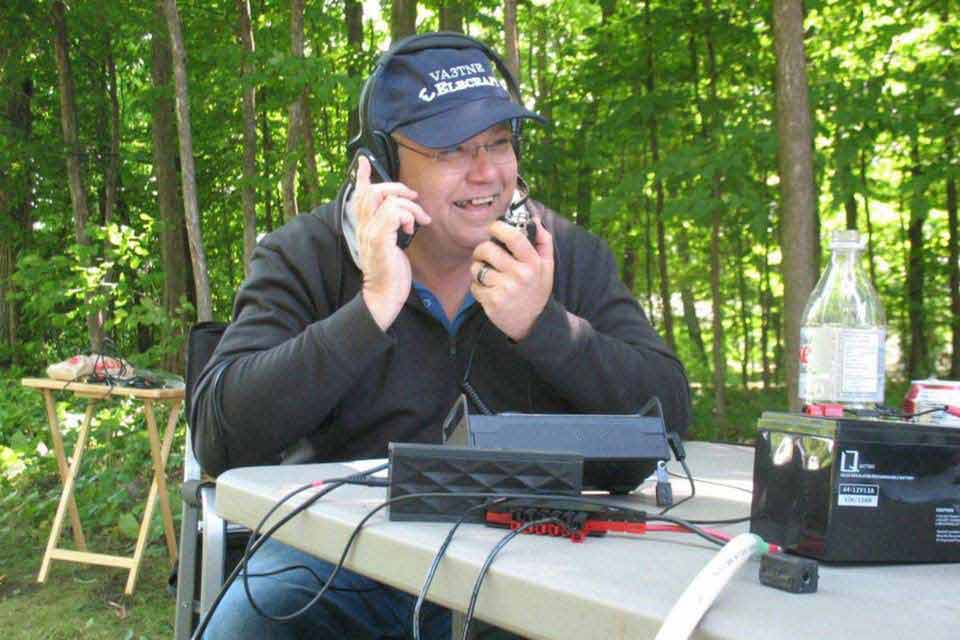Amateur radio bands

Amateur radio bands
Amateur radio frequency allocation is done by national telecommunication authorities. Globally, the International Telecommunication Union (ITU) oversees how much radio spectrum is set aside for amateur radio transmissions. Individual amateur stations are free to use any frequency within authorized frequency ranges; authorized bands may vary by the class of the station license.
Radio amateurs use a variety of transmission modes, including Morse code, radioteletype, data, and voice. Specific frequency allocations vary from country to country and between ITU regions as specified in the current ITU HF frequency allocations for amateur radio. The list of frequency ranges is called a band allocation, which may be set by international agreements, and national regulations. The modes and types of allocations within each frequency band is called a bandplan; it may be determined by regulation, but most typically is set by agreements between amateur radio operators.
National authorities regulate amateur usage of radio bands. Some bands may not be available or may have restrictions on usage in certain countries or regions. International agreements assign amateur radio bands which differ by region.
Low frequency
- 2200 metres – 135.7–137.8 kHz – just below the Asian and European longwave broadcast band and far below the commercial AM broadcast band.
-
Medium frequency
- 630 metres – 472–479 kHz – just below the commercial AM broadcast band and the maritime radio band.
- 160 metres – 1800–2000 kHz (1.8–2 MHz) – just above the commercial AM broadcast band. This band is often taken up as a technical challenge, since long distance (DX) propagation tends to be more difficult due to higher D layer ionospheric absorption. Long-distance propagation tends to occur only at night, and the band can be notoriously noisy particularly in the summer months. 160 metres is also known as the "top band", as it was for many years the longest-wavelength amateur band. Allocations in this band vary widely from country to country.
-
High frequency
- 80 metres or 80 / 75 meters – 3.5–4.0 MHz (3500–4000 kHz) – Best at night, with significant daytime signal absorption.
- 60 metres – 5 MHz region – A relatively new allocation and originally only available in a small number of countries such as the United States, United Kingdom, Ireland, Norway, Denmark, and Iceland, but now continuing to expand.
- 40 metres – 7.0–7.3 MHz – Considered the most reliable all-season DX band. Popular for DX at night, 40 metres is also reliable for medium distance (1,500 km; 1,000 miles) contacts during the day.
- 30 metres – 10.1–10.15 MHz – a very narrow band, which is shared with non-amateur services.
- 20 metres – 14.000–14.350 MHz – Considered the most popular DX band; usually most popular during daytime.
- 17 metres – 18.068–18.168 MHz – Similar to 20 metres, but more sensitive to solar propagation minima and maxima. 17 metres is a WARC band.
- 15 metres – 21–21.45 MHz – Most useful during solar maximum, and generally a daytime band. Daytime Sporadic E propagation (1,500 km / 1,000 miles) occasionally occurs on this band.
- 12 metres – 24.89–24.99 MHz – Mostly useful during daytime, but opens up for DX activity at night, during solar maximum. 12 metres is one of the WARC bands. Propagates via Sporadic E and by F2 propagation.
10 metres – 28–29.7 MHz – Best long distance (e.g., across oceans) activity is during solar maximum; during periods of moderate solar activity the best activity is found at low latitudes.






